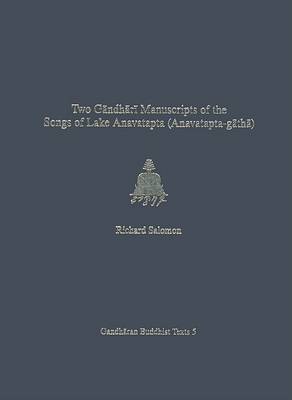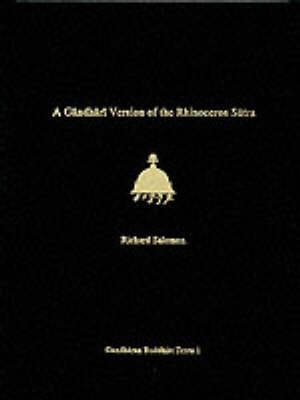Gandharan Buddhist Texts
1 primary work • 5 total works
Volume 5
Two Gandhari Manuscripts of the "Songs of Lake Anavatapta" (Anavatapta-gatha)
by Richard Salomon
This fifth volume in the Gandharan Buddhist Texts series (GBT) presents two fragmentary manuscripts of the poem "Songs of Lake Anavatapta." Previously known from versions in Sanskrit, Pali, Tibetan, and Chinese, the two recently discovered Gandhari-language versions confirm the poem's popularity in the ancient Buddhist world.
The "Songs of Lake Anavatapta" consists of a series of narrations by the Buddha's foremost disciples (and finally by the Buddha himself) in which each reveals his own complex karmic history over many past lives and explains how, as a result of good deeds, he has come to be an enlightened disciple of the Buddha.
An important theme is the complexity of karma, whereby not only the enlightened beings but even the Buddha himself suffer the effects of remnants of bad karma from evil deeds long-ago.
For more information go to the Early Buddhist Manuscript Project web site at http://www.ebmp.org/
Prominent in several Buddhist traditions, the Rhinoceros Sutra espouses the virtues of solitude, explaining the dangers of attachments, prescribing a solitary spiritual life, and discussing the nature of friends and friendship. British Library Fragment 5B is the remnant of a scroll that originally contained a complete text of the Rhinoceros Sutra. A Gandhari Version of the Rhinoceros Sutra examines in detail the literary and textual background of the sutra, describes the condition of the scroll and its reconstruction, analyzes the text, comparing it with other extant versions, and presents a literal English translation.
Although the original provenance of the British Library’s Kharosthi scrolls is uncertain, there are strong indications that they came from Hadda in the Jalalabad Plain of eastern Afghanistan, just west of the Khyber Pass. The scrolls were most likely written during the reign of the Saka rulers, in the early first century A.D., making them in all probability the oldest Buddhist texts ever found, as well as the earliest surviving manuscripts in any Indic language. The discovery of the British Library scrolls has brought to light a previously unknown realm of Buddhist literature and scholarship, and revealed that Gandhari was one of the major literary languages of Indian Buddhism.
For more information go to the Early Buddhist Manuscript Project web site at http://www.ebmp.org/
Despite abundant archeological evidence of Gandhara's thriving culture, until now there has been virtually no documentary evidence of its literary and religious canon. This volume introduces a groundbreaking project to decipher and interpret the Gandharan texts. It provides a detailed description of the manuscripts and a survey of their contents, along with a preliminary evaluation of their significance. Also included are representative samples of texts and translations. This discovery sheds new light on the regional character of early Indian Buddhist traditions, the process of the formation of standardized written canons, and the transmission of Buddhism into central and east Asia. Ancient Buddhist Scrolls from Gandhara will appeal to a broad audience with interests in Buddhism, comparative religion, and Asian languages. For more information go to the Early Buddhist Manuscript Project web site at http://www.ebmp.org/


